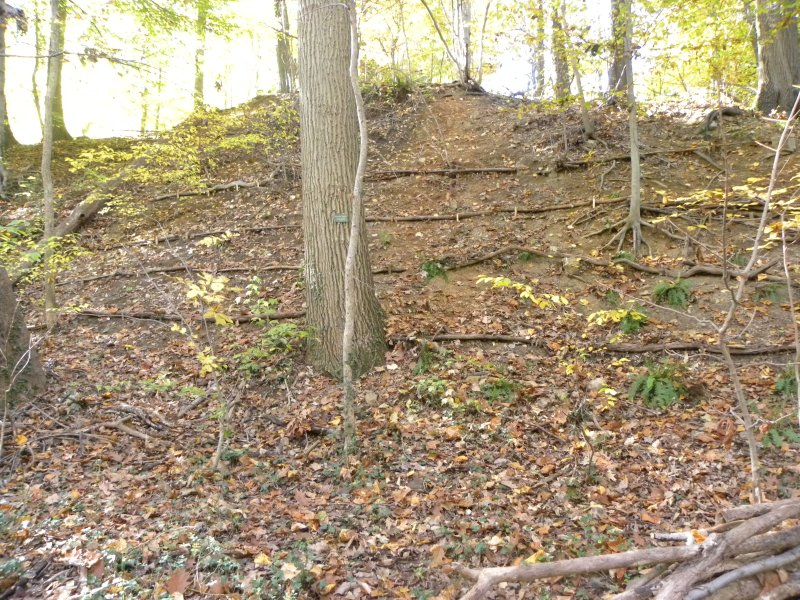Last Updated on May 15, 2017
If you walk along the Nature Trail, be sure to notice the new erosion control branches staked into the hillside just downstream of the covered bridge. Members of the UMBC Lambda Chi Alpha service fraternity completed this backbreaking work during our recent Fall Trail & Stream Clean-up Day. We were more than happy to let them clamber up the hill, and more will be done in the future. The Clean-up Day also revealed a small old dump area in the bank of the feeder stream near the upper end of Herbert Run on campus. The dump area was long ago covered up by soil, but erosion of the bank was allowing bottles and crockery to fall into the stream. We picked up what we could of the debris, and we will do more to clean the area or at least contain it.
The gardens associated with our Nature Trail Committee have pretty much gone dormant for the season, with two exceptions. The Butterfly Garden still has its white Fall Daisies in bloom, although they are drooping a bit. In the Wildflower Garden, most of the flowers at the front of the Garden are still in colorful bloom, although many of them also are drooping. A few noticeable exceptions are the Giant Marigolds (Tagetes erecta).
These late-blooming plants have grown to 8-9 feet tall, considerably higher than their maximum height of 5 feet. I guess that we won’t have to add fertilizer to this garden for several years.
Out on the Lake Trail, you may notice a large number of invasive black locust saplings growing on the dam. Codes for earthen dams state that the structures should not have trees growing on them, but years ago when the dam was built, little was done to control what vegetation established itself on the soil surface. So we got mostly invasive species, like the black locusts, honeysuckle, and multiple types of weeds growing on the dam.
The locusts grew into full-fledged trees, which eventually were cut down, but the remnants of the trees continue to send up sucker saplings, which grow about five feet per year, so they have to be cut back. Our campus Invasive Plants Crew plans to cut these thorny trees in the early spring. That is when access to them is still easy, and the sap has started flowing so that poison applied to the cut stems will hopefully be carried to the roots and kill the trees.
This time of year be sure to enjoy the fall foliage on campus. The trees are a splendid part of our scenery, even if just viewed from our skywalks above the Nature Trail.
Bert Clegern
Nature Trail Committee Co-Chairman



